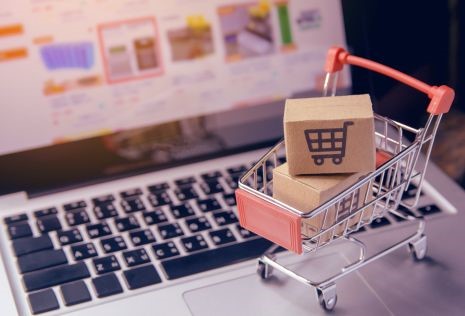Dropshipping Facebook ads: 2024 guide for beginners

Want to scale your dropshipping business in 2024? Facebook Ads are the perfect launchpad for beginners looking to grow quickly and efficiently. In this guide, you’ll discover everything you need to know to get started on the right foot.
Table of contents

What is dropshipping?
Dropshipping is a business model where you sell products online without holding any inventory. Instead, you act as the middleman between your customers and a supplier.
Here’s how it works:
- You list a product in your online store.
- When a customer places an order, you forward it to your supplier.
- The supplier ships the product directly to the customer.
This approach means you can focus on marketing and sales without the hassle of managing stock or shipping logistics. It’s low-risk, highly scalable, and a popular way to star an online business.
Benefits of dropshipping
Dropshipping isn’t just simple—it comes with plenty of advantages that make it perfect for beginners:
- Low startup costs: No need to invest in inventory or a warehouse.
- Flexibility: Run your business from anywhere with an internet connection.
- Diverse product range: Partner with suppliers offering various products to test different niches.
- Scalability: Focus on marketing and sales while your supplier handles logistics.
- Minimal risk: Only pay for products after you make a sale, avoiding unsold inventory.

What are Facebook Ads?
Facebook Ads are paid advertisements that appear across Facebook, Instagram, and partner sites. With billions of active users, Facebook offers advanced tools to help businesses reach their ideal audience.
Here are some key types of Facebook Ads:
- Image Ads: Showcase your product with a compelling photo.
- Video Ads: Great for telling a story or demonstrating a product.
- Carousel Ads: Display multiple images or products in a single ad.
- Dynamic Ads: Tailored to customers based on their browsing behavior.
The platform’s advanced targeting options, including demographics, interests, and behaviors, make it a goldmine for connecting with potential customers.
Facebook Ads vs. Google Ads
While both platforms are powerful for advertising, they work in different ways:
- Facebook Ads: These are primarily interruptive ads, meaning they appear while users scroll through their feed. They rely on grabbing attention with visuals and targeting users based on interests and behaviors. This makes Facebook Ads ideal for creating demand—perfect for dropshipping products that users didn’t know they needed until they saw your ad.
- Google Ads: These are intent-driven ads, targeting users actively searching for something specific. Google Ads are great for capturing existing demand, but they can be less effective for introducing new or impulse-buy products, which are often popular in dropshipping.
In short, Facebook Ads shine when you want to spark interest and discovery, whereas Google Ads are better for targeting users already looking for a solution.

Why should you use Facebook Ads for dropshipping?
Facebook Ads are one of the most powerful tools for growing a dropshipping business. Here’s why:
1. Massive audience reach
Facebook has over 2.9 billion monthly users, giving you access to a vast audience. No matter what niche you’re in, your customers are likely scrolling through Facebook or Instagram right now.
2. Advanced targeting options
You can target people based on their interests, shopping behavior, age, location, and more. This precision ensures your ads reach the right people, making every dollar count.
3. Budget-friendly
You don’t need a huge budget to start. With Facebook Ads, you can begin with as little as $5 a day and scale as you see results.
4. Trackable results
Facebook’s analytics tools let you monitor your campaigns in real-time. This data helps you fine-tune your ads for better performance and higher ROI.
5. Visual storytelling
Dropshipping relies on capturing attention quickly. Facebook Ads’ visual format is perfect for showcasing eye-catching products and creating irresistible offers.

How to run Facebook Advertising?
Facebook Ads can seem overwhelming, but with the right strategy, you’ll be on your way to running a successful dropshipping campaign.
Let’s break it down into actionable steps, using a beginner-friendly strategy that’s focused on a $30 daily budget. This approach ensures you gain valuable experience while keeping your costs manageable.
Step 1: Choose the right product
The first step is selecting a product that fits your advertising budget. For a $30 daily budget, aim for products priced under $30 with supplier costs between $1 and $13.
This ensures your ads remain cost-effective and competitive, allowing you to build profit margins that make sense.

Step 2: Set up your campaign
Start by creating a new campaign in Facebook Ads Manager and selecting the objective “Conversions”—this tells Facebook you want to focus on getting sales. Then, follow these steps:
- Create a campaign and set up 10 ad sets within it.
- Assign each ad set a $3 daily budget (10 x $3 = $30).
- Set the targeting options:
- Conversion Event: Purchase.
- Audience: Select countries where you want to advertise.
- Age: 18–65+.
- Language: English.
- Placement: Automatic.
Each ad set will target a unique audience using the “Detailed Targeting” option. For example, if you’re in the pet niche, use keywords like “Dog Lovers”, “Pet Supplies”, or “Animal Enthusiasts.” Aim for audiences with 10 million or more people for a broader reach.
Step 3: Test ads with creative variations
Testing your ads is crucial for finding what works. To do this effectively:
- Create two versions of your ad within each ad set—one with a different image or video and another with alternative text.
- Ensure the ad includes:
- Eye-catching visuals.
- A short and engaging caption.
- A clear call-to-action, such as “Shop Now” or “Grab Yours Today!”
By testing two creatives, you can determine which resonates better with your audience. In the end, you’ll have 10 ad sets and 20 ads in total.

Step 4: Monitor and optimize ads
Once your ads are live, monitor their performance closely. Here’s how:
- After 24 Hours: Turn off any ads with a Cost Per Click (CPC) over $1.
- After 48 Hours: Turn off ad sets that haven’t generated any “Add to Cart” (ATC) actions.
- After 72 Hours: Turn off ad sets that haven’t made a purchase.
The goal is to narrow your campaign down to at least two profitable ad sets and one high-performing ad. If none perform, revisit your audience or creative strategy and start again.
Step 5: Scale winning ads
Once you’ve identified successful ads, it’s time to scale. Duplicate your best-performing ad sets into a new campaign and increase your budget gradually. Use Facebook’s Campaign Budget Optimization (CBO) feature to allocate funds automatically to top-performing ads.
For example:
Start with a daily budget of $90 for the new campaign.
Monitor the performance over two days. If your Cost Per Purchase (CPP) exceeds your target, adjust or pause underperforming ad sets.
Step 6: Use lookalike audiences for advanced scaling
When you’ve spent enough on ads to gather meaningful data (around $500), you can create Lookalike Audiences. These are new audiences based on people who’ve already engaged with your business.
Create Lookalike Audiences from:
- Facebook Engagement.
- Website visitors (Page Views).
- People who viewed product details (View Content).
- Video views (if using video ads).
These audiences allow you to reach users similar to your best customers, giving your campaign an extra boost.

Key tips for success
- Start small: Begin with a modest budget to test what works before scaling.
- Stay organized: Rename ad sets to reflect their audience (e.g., “Dog Lovers” or “Travel Enthusiasts”) for easy tracking.
- Experiment continuously: Test new creatives, audiences, and placements regularly.
- Be patient: Not every campaign will be a hit. Use setbacks to learn and improve.



